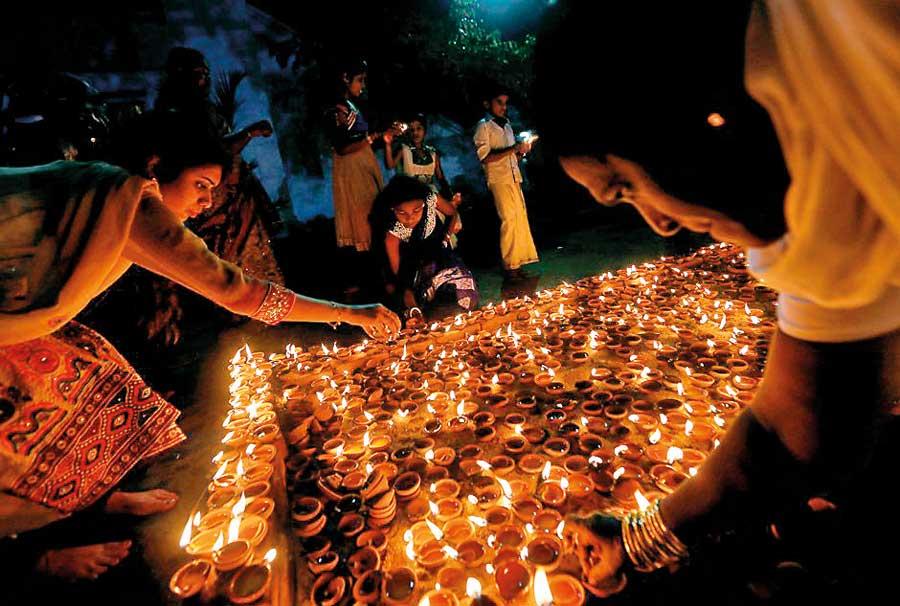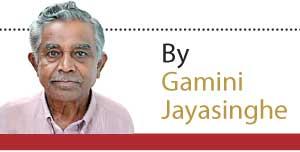Reply To:
Name - Reply Comment

For Hindus world over Maha Sivarathri is purely a religious ceremony of day time fast and vigilance throughout the night. They observe these special rites on the fourteenth night of Phalgma (February/March) which is the longest night in the year, according to the Hindu calendar.
This year it falls on February 2l. Observances are started in the morning on the festive day and continued throughout the night in a bid to wash away the sins and pave the way for eternal bliss through basic religious disciplines of Ahinsa (non injury) Satya (truthfulness), Brahmacharya (celibacy), Daya (compassion), Kshama (forgiveness)and Anissa (absence of jealousy).
Maha Siva Ratri is a solemn occasion to worship Lord Siva who is regarded as ocean of love, ocean of knowledge, ocean of peace and the ocean of happiness. God Siva is formless  (Arupa). However, out of compassion for devotees he appears in the form of a luminous light arising out of Siva Lingum. He takes a form in this way for the sake of devotees, who will otherwise be left in perpetual darkness.
(Arupa). However, out of compassion for devotees he appears in the form of a luminous light arising out of Siva Lingum. He takes a form in this way for the sake of devotees, who will otherwise be left in perpetual darkness.
There are various Puranic traditions that explain the origin of the holy night. One of such traditions is given below.
The tradition held in Sri Lanka Is that there was a war between Brahma (not brahamin) and Vishnu as to wno was greater among the Hindu Trinity. To stop the war and to show the world the actual fact it is said that Siva emerged as a cosmic Linga of light of which the top or the bottom could not be seen. Then he commanded either of them ( Brahma or Vishnu) to find the top and bottom of the cosmic Linga. While Vishnu turned into a boar and started digging down in search of the bottom, Brahma turned into a swan and flew higher and higher in search of the top of the Linga.
Half way through Vishnu realises the futility of his exercise and surrenders to Siva and accepts him as supreme. Meanwhile, Brahma now getting tired of flying also realises that his exercise too was futile. However, he meets a flower (Thazhampoo, a kind of pine flower) that was falling from the head of Siva on his way. Brahma asks the flower whether it will testify to Vishnu that Brahma had indeed reached the top and the flower agrees. Thus they return and try to fool Vishnu who has already surrendered to Siva. Lord Siva, seeing that Brahma was trying to cheat Vishnu, decreed that thereafter no one would build temples for Brahma or keep Brahma in any temple that would be built.
It is believed that this is the reason why there are no Brahma temples while there are temples for Siva, Vishnu and others. Siva is considered the Adi (great) Guru from whom the Yogic tradition originates. According to tradition the planetary position on this night are such that there is a great natural upsurge of energy in the human system. It is said to be beneficial for one’s physical and spiritual well-being to be awake and be aware throughout the night.
On this day artistes from various fields such as classical music and dancing perform all night.
To mark the Sivaratri festival devotees wake up early, take a ritual bath and after wearing fresh and new clothes visit the nearest Siva temple for Abhishekam or anointing the Siva Lingam with milk, honey, ghee, sugar and water.
In the temples the priests perform Poojas every three hours ringing temple bells. Devotees spend the night singing hymns and chanting mantras repeating the words Om Nama Sivaya. Flowers and leaves are used in performing Poojas. Devotees specially include the leaves of the Vilva tree because it is believed that the meritorious effect of the leaves of the Vilva tree is more.
Rituals of Maha Sivaratri
Tripundra refers to the three horizontal stripes of holy ash applied to the forehead by worshippers of Lord Siva. These three stripes symbolize spiritual knowledge, purity and penance (spiritual practice of Yoga), so also they represent the three eyes of Lord Siva.
The seed of the Rudrakshya tree is said to have sprung from the tears of Lord Siva. When worshipping Lord Siva it is ideal to wear the seed of the Rudraksha tree. Rudraksha is reddish in colour with yellow stripes. On Sivaratri only cold water and Vilva leaves are offered to the Lingam. Other traditional offerings such as bathing it in milk and pancamruta ( three fruits, honey and jaggery or anointing with vermillion (kumkum) or white consecrated rice (Akshata) (symbols of fertility or creation) are not done on this day when Lord Siva is worshipped as the deity of dissolution.
Usually pooja ceremonies are conducted four times during the night i.e quarterly. The first quarter or Muthalam (First) Samam commences at 8.00 p.m. Lotus flowers are given preference in the first quarter pooja. For the Pooja one hundred and eight kumbams are used.
At l0.30 p.m. the Irandan Samam (second) ritual commences. This Pooja is performed with forty nine kumbams. In the second quarter pooja Thulasi leaves are given preference.
The most important part of the Sivaratri ceremony is performed during the Moondraam Samam (Third) commencing at midnight. This is called Lingortpavam pooja. Lingortpavam marks the time when Siva emerged as the cosmic Linga before Vishnu and Brahma. It is believed that Lord Siva although formless reveals himself in the form of glowing light before devotees. This is an exalted and holy occurrence which is a rare gift for devotees. It is the climax of the ceremony. Five priests participate with five Kumbams.
The fourth quarterly ceremony called Nankam Samam (Fourth) and the auspicious part which commences at 3.00 a.m. and comes to an end at dawn. During this session of pooja Senkalunir flowers are used.
Apart from all night time poojas devotees attend to prayers in the morning and evening at home or in parks or at rivers flowing by the side of temples.
Through worshipping and meditation during Sivaratri devotees hope to attain Moksha or salvation. Lord Siva guides the man in the spiritual path.